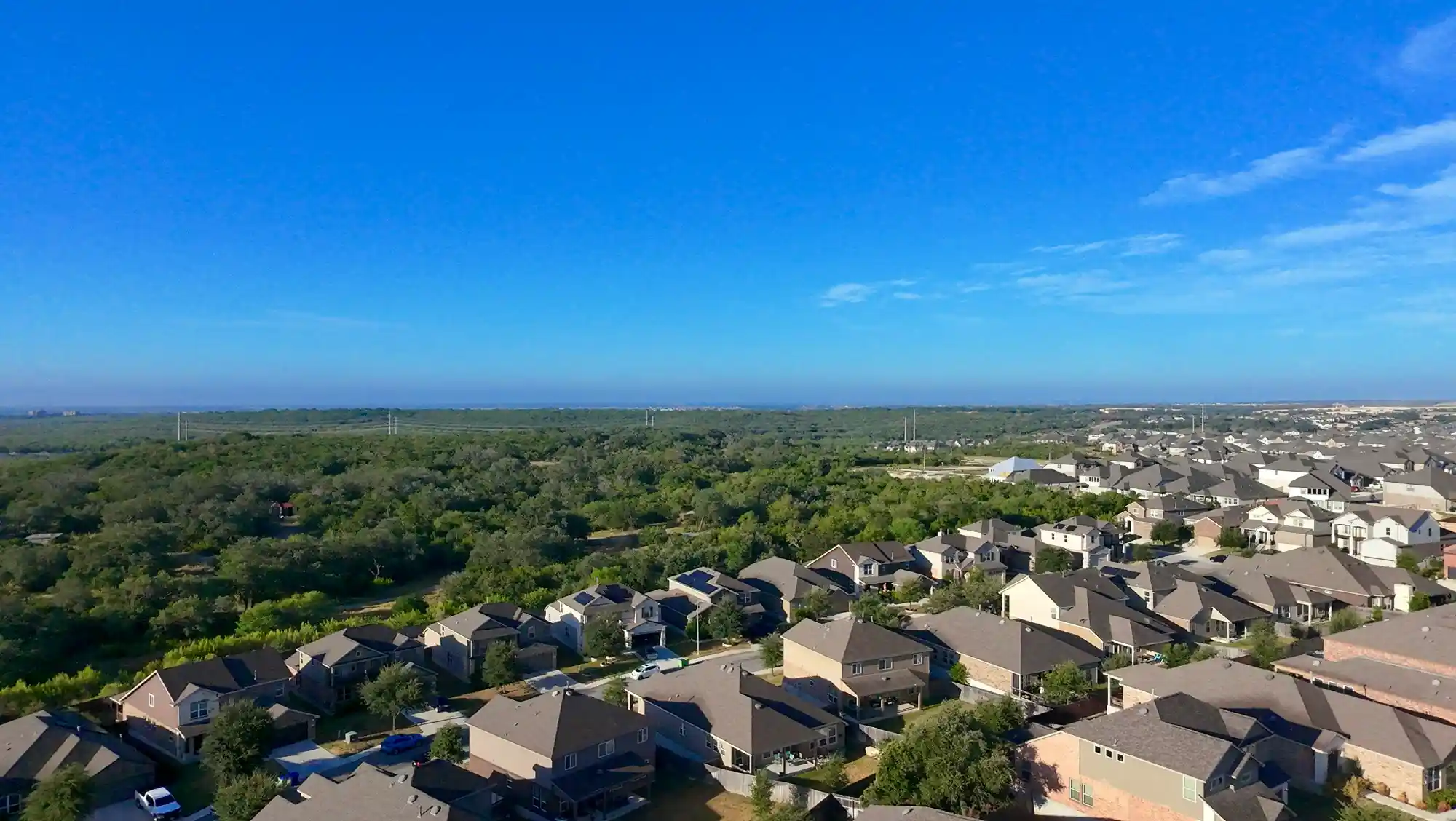You own a thriving short-term rental in Austin generating $4,000 per month. The property has appreciated by $80,000 over the past three years, creating substantial equity. You've found another STR opportunity in San Antonio, but your cash is tied up in your current investment. How do you unlock that growth potential without selling your profitable asset?
The answer lies in a powerful but overlooked financial tool: a Home Equity Line of Credit (HELOC) on your investment property. This flexible financing option allows you to tap into your property's equity while maintaining ownership and collecting rental income.
For Texas short-term rental investors, understanding how to leverage a HELOC is crucial. Texas has unique property laws and a booming STR market that create distinct opportunities and considerations. Whether you're acquiring your second property or scaling to a multi-unit portfolio, mastering this strategy can accelerate your path to financial freedom.
This guide will explain what a HELOC on a Texas investment property entails, how to qualify, and how to strategically use those funds to maximize returns and build a thriving STR empire.
What is a HELOC?
A Home Equity Line of Credit (HELOC) is a revolving credit line secured by your property’s equity, like a credit card backed by real estate. Unlike a traditional loan with a lump sum upfront, a HELOC gives you access to funds as needed during a specified draw period, typically 10 years. You pay interest only on the amount you borrow, making it a flexible tool for strategic investors.
Understanding key terminology is essential for navigating the HELOC process:
- Equity: The difference between your property's market value and your outstanding mortgage balance.
- Draw Period: The timeframe (usually 10 years) to access funds from your line of credit.
- Repayment Period: The phase (typically 15-20 years) after the draw period ends when you must repay both principal and interest.
- Loan-to-Value (LTV): The ratio of the loan amount to the property's appraised value. Lenders use a Combined Loan-to-Value (CLTV) ratio for HELOCs.
Navigating Texas-Specific Property Laws
Here's where Texas gets interesting for investors. While the state is famous for its robust homestead laws, including the restriction that cash-out refinances on primary residences cannot exceed 80% Loan-to-Value, these measures do not apply to non-homestead investment properties. This distinction works in favor of real estate investors, providing more flexibility in financing options.
For Texas investment properties, lenders have more flexibility in setting LTV ratios and loan terms since homestead protections don't apply. Investors must understand their loan terms and ensure they can service the debt through rental income or other sources.
Step-by-Step to Get a HELOC on Your Texas Rental Property
Qualifying for an investment property line of credit in Texas requires stricter criteria than a primary residence HELOC, but the process is straightforward and manageable with proper preparation. Success hinges on thorough preparation and working with the right lender who understands investment property financing.
Step 1: Assess Your Financial Position & Equity
Before approaching any lender, conduct a comprehensive self-audit of your financial position. Lenders will scrutinize your finances, so know where you stand:
- Equity Calculation: Use this formula to determine available equity: (Current Market Value × 0.80) - Outstanding Mortgage Balance = Potential HELOC Amount. For example, if your property is worth $300,000 with a $150,000 remaining mortgage, your potential HELOC is $90,000.
- Credit Score: Most lenders require a minimum credit score of 680 for investment property HELOCs. Scores of 720+ qualify for the best rates and terms.
- Debt-to-Income (DTI) Ratio: Lenders want a DTI below 43%, including all existing mortgage payments, the new HELOC payment, and personal debts.
- Cash Reserves: Lenders require 2-6 months of mortgage payments in reserves for each investment property you own, demonstrating your ability to weather vacancy periods or unexpected expenses.
Step 2: Find the Right Lender
Not all financial institutions offer HELOCs on investment properties, making lender selection critical. Many large national banks have exited this market, so better options are often with regional Texas banks, credit unions, and specialized mortgage brokers who understand financing a Texas short-term rental.
Research local Texas banks serving real estate investors. Credit unions offer competitive rates and personalized service. Don't overlook mortgage brokers who work with multiple lenders because they can find programs you wouldn't discover.
Step 3: Prepare Your Documentation
Organization is key to a smooth application process. Before applying, gather these essential documents:
- Photo ID issued by the government
- Recent pay stubs and employment verification letters
- Two years of personal and business tax returns with all schedules
- Mortgage statements for all owned properties
- Rental income documentation (lease agreements, Airbnb/VRBO earnings reports, property management statements)
- Recent bank statements (2-3 months) showing cash reserves
- A business entity documents if the property is held in an LLC or corporation.
- Current property insurance policies
- Recent rent rolls or revenue projections for STR properties
Step 4: The Application and Underwriting Process
Once you submit your application, the underwriting process begins, taking 30-45 days. The lender will verify all provided information, run a hard credit inquiry, verify your income through third-party sources, and analyze your property's income potential.
Be ready to provide additional documentation about seasonal occupancy rates, average daily rates, and market comparables for STR properties. Lenders are becoming more sophisticated in evaluating short-term rental income, so detailed records will work in your favor.
Step 5: Property Appraisal and Closing
The lender will order a new appraisal to confirm your property's current market value, which is crucial since your credit line depends on it. For STR properties, ensure the appraiser understands the income-generating use, as it can positively impact the valuation.
The closing process is simpler and cheaper than a purchase mortgage, often at a title company or attorney's office. After closing, you'll have a three-day right of rescission before accessing your funds.
3 Strategies to Use Your HELOC
Securing the HELOC is just the first step. The key to success lies in deploying that capital intelligently to maximize ROI. Here are three proven strategies for Texas STR investors to build sustainable wealth.
Strategy 1: The Down Payment for Your Next STR Acquisition
The most common and profitable use of HELOC funds is as a down payment on your next investment property. This strategy allows you to acquire additional assets without depleting your cash reserves or waiting years to save for another down payment.
The key to success is ensuring your new acquisition generates enough cash flow to cover its own mortgage and the HELOC payment on your original property. This requires careful market analysis and identifying a high-potential property in prime Texas markets like Hill Country, Lake Travis, or near major employment centers in Dallas, Houston, or Austin.
Strategy 2: Funding a "Wow-Factor" Renovation
Sometimes the best investment isn't a new property. It's maximizing what you already own. Using HELOC funds to add value to an existing STR property can increase its revenue potential and market position.
Consider high-impact improvements that directly increase Average Daily Rates (ADR). These improvements include adding a luxury hot tub and outdoor entertainment area, converting a garage into a game room with pool table and bar, or modernizing kitchens and bathrooms with high-end finishes. These improvements pay for themselves within 12-24 months through increased booking rates and premium pricing.
Strategy 3: A Turnkey Transformation with Professional Design
In today's competitive STR market, amateur decorating and mismatched furniture won't cut it. Professional guests expect Instagram-worthy spaces that justify premium rates. Using HELOC funds for professional interior design and furnishing can differentiate a standard listing from a "book-it-now" property commanding top-tier pricing.
A cohesive, professionally designed space enhances photos and creates an emotional connection with potential guests that drives bookings and five-star reviews. The result is higher occupancy rates, increased ADR, and a faster path to profitability that justifies the design investment.
Risks & Alternatives to Investment Property HELOC’s
A HELOC is a powerful wealth-building tool, but it's a debt instrument that carries real risks. Smart investors understand and plan for these potential downsides before proceeding.
Risks to Consider
- Variable Interest Rate Risk: Most HELOCs have variable interest rates tied to the Prime Rate. When interest rates rise, your monthly payment increases, impacting your property's cash flow. Stress-test your numbers at rates 2-3% higher than current levels.
- Leverage Risk: Your property now has two liens, increasing your overall leverage. If property values decline or rental income drops, you could be "underwater" with total debt exceeding the property's value.
- Payment Shock: When the draw period ends (typically after 10 years), your payment structure changes dramatically. You'll no longer have interest-only payments. Instead, you must repay both principal and interest, often doubling or tripling your monthly payment.
- Call Risk: Some HELOC agreements allow lenders to "call" the loan if property values decline significantly, potentially forcing immediate repayment of the entire balance.
Alternatives to a HELOC
- Cash-Out Refinance: This option replaces your existing mortgage with a new, larger loan, providing access to equity in a lump sum. Unlike a HELOC's variable rate, cash-out refinances typically offer fixed rates. However, you'll lose the flexibility of drawing funds as needed. In most cases, Texas allows cash-out refinance on investment property up to 80% LTV.
- Business Line of Credit: Unsecured business lines of credit provide flexibility without using property as collateral for investors with multiple properties and established rental income. These require strong credit and proven cash flow and offer more liquidity options.
How Surge Maximizes Your HELOC Investment
Unlocking your equity through a HELOC is only half the battle. To build long-term wealth through short-term rentals, you need a comprehensive strategy and an experienced team to execute it flawlessly. Surge gives you an advantage in the Texas STR market.
Our integrated approach maximizes the return on your HELOC investment. Our brokerage team helps you find the ideal Texas STR property to purchase with your funds for acquisition, running detailed revenue projections and market analysis before you make an offer. We understand Texas STR markets and identify high-profit properties.
Once you've acquired the property, our in-house design team transforms it into a top-performing, turnkey rental that attracts premium guests from day one. We create Instagram-worthy spaces that command higher nightly rates and generate the five-star reviews that drive long-term success. Finally, our full-service STR management handles every operational detail, including dynamic pricing optimization, guest communication, professional cleaning coordination, and maintenance management, to generate the consistent passive income needed to service your HELOC and deliver strong returns on your investment.
Conclusion
A HELOC on a Texas investment property offers flexibility for scaling your short-term rental portfolio, but success requires careful planning, strong financial fundamentals, and a clear understanding of the opportunities and risks. Texas property law can work in your favor, but stricter qualification requirements mean you must prepare thoroughly.
The success of using a HELOC depends less on the loan terms and more on how strategically you deploy that capital. Whether you're acquiring a property, renovating for higher returns, or creating a guest experience, the key is ensuring every dollar invested generates measurable returns that exceed your cost of capital.
If you're ready to leverage your existing assets to build a thriving STR portfolio in Texas, the next step is developing a solid, data-driven strategy tailored to your goals and market conditions. Schedule a consultation with our Texas STR experts today and let's build your path to financial freedom through strategic real estate investing.





